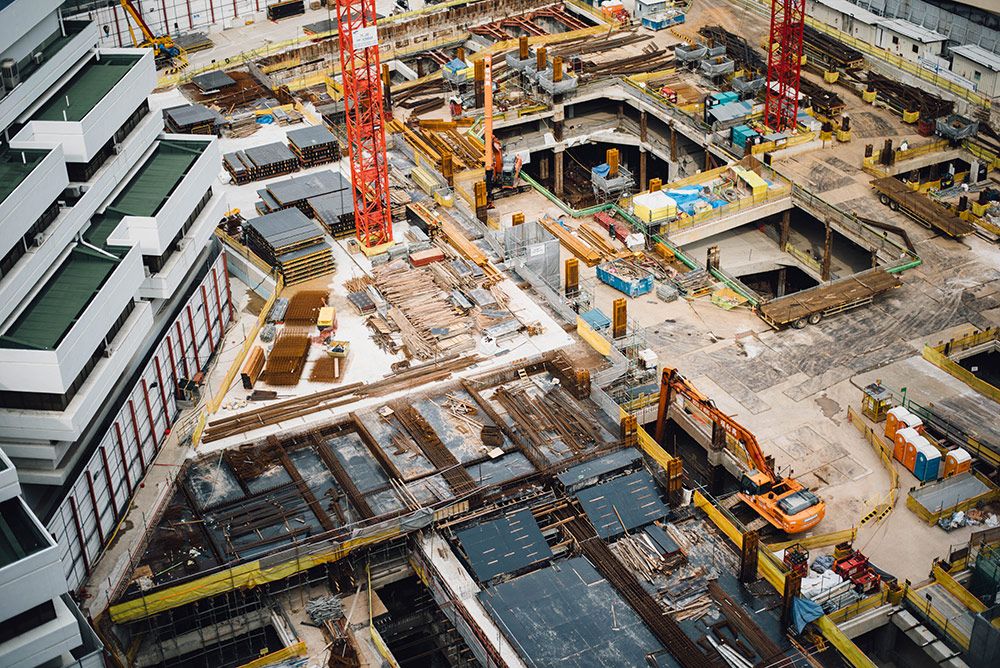Trimble | BY Karthik Rau
As Founder and CEO of FLICQ, Karthik Rau is laying the groundwork for an innovative IoT technology that uses smart sensors and proprietary algorithms to address operational and technical challenges in the industrial and consumer markets. Karthik believes that edge computing, a means of optimizing cloud computing systems by using data processing at the “edge” of a network, has the power to transform the construction industry.
The Case for IoT Technology in Construction
The Internet of Things (IoT) has the power to transform industries— and the construction sector, while not at the leading edge of adoption, is not far behind. IoT technology and applications are finding their way into not only the construction of new buildings but also the maintenance and operation of existing structures.
Uses of IoT in Construction
While the use-cases are almost endless, the following four applications are gaining traction in the construction industry:
- Worksite safety – construction managers and operators are using real-time information about personnel, worksites, and job conditions to run their operations more safely.
- Predictive maintenance – sensors provide information about the health of mechanical assets like pumps, elevators, and HVAC compressors which can be used to increase uptime and reduce maintenance costs.
- Energy monitoring and optimization – smart buildings can adapt to things like changes in the environment, usage models, footfall, and other occupational characteristics, thereby optimizing energy consumption.
- Construction optimization – smart sensors embedded into the structures during construction continue to provide real-time information about the structural health of the building years after completion.

The IoT Technology Data Conundrum
Construction companies embarking on the digital transformation journey tend to start with the premise that they need to solve the data acquisition problem, i.e., aggregating data from existing databases combined with real-time data is sufficient to make their operations smarter. As other industries have discovered, however, gathering data alone rarely results in true transformation due to the fact that the rest of the company’s processes generally are out of step with the IoT advancements. In fact, McKinsey, Cisco, and IBM have recently published articles that claim that only 1% of the industrial IoT data is actually analyzed and available for decision-making.
Creating such a big data-centric platform requires significant investment in infrastructure, compute resources, and analytics. Construction companies are particularly vulnerable to spiraling costs due to the need for monitoring assets for the entire duration of their useful lives. Traditionally, the intelligence required to manage such a platform has resided in the cloud. Funneling the data to a central repository introduces latency and makes it hard for companies to react to changing conditions in real-time. In addition, the growing concerns about data security and the general reluctance to store corporate data in a public cloud has forced companies to look for alternative IoT implementations.
Edge Computing to the Rescue
In order to avoid the data hoarding problem described above, the assets generating data must have the capability to filter and process information independently. The smart sensors are context-aware and can autonomously send alerts when they detect anomalies. By filtering out the uninteresting data, the resulting IoT implementation consumes less bandwidth, uses fewer computing resources, and costs an order of magnitude less than traditional IoT architectures.
For instance, a smart sensor attached to an HVAC compressor understands what “normal” feels like and only raises an alarm when the on-board algorithms detect the asset starting to drift towards anomalous behavior. Rather than filling up cloud storage with gigabytes of superfluous data while consuming valuable bandwidth, smart sensors provide what companies really need to transform their businesses: actionable intelligence.
This technology, called Edge Computing, presents a step-change opportunity and can potentially provide construction companies a way to leapfrog their competition by adopting a smarter approach to managing data and their businesses.
For more information about how IoT can benefit your construction firm, take a look at Flicq, or connect with Karthik Rau on Linkedin.